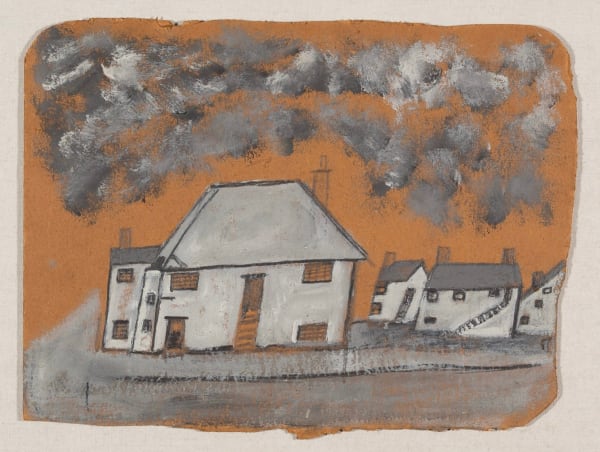Alfred Wallis Paintings for Sale1855-1942
Alfred Wallis was an English painter, fisherman, mariner and marine stores dealer. He first went to sea at the age of ten as a cabin boy for one year. In 1875 he became an inshore fisherman with the Mount’s Bay fleet at Newlyn. The following year, in April 1876, he married Susan Ward, a widow with five stepchildren. To provide for his new family he joined the merchant service just weeks after their marriage and sailed to Newfoundland and Labrador in the dried salt cod trade. There he survived three terrible storms at sea - experiences that never left him and would later be expressed in many of his paintings. By 1878 he had become a ‘gatherer’ of scrap for Joseph Denley’s marine stores business in Penzance. In 1882 Wallis and his family moved to St Ives, where Denley employed him to run a second marine stores business on his behalf. Wallis and his wife took over the business in the late 1890s and in 1911 they retired to a small cottage in Back Road West. His wife died in 1922, and three years later Wallis took up painting as a hobby.
In August 1928 Wallis pinned several of his paintings to his door, where they were seen by Christopher Wood and Ben Nicholson on a day trip to St Ives. Both artists were already working in a primitive idiom but were further encouraged by their meeting with Wallis, and they championed his work. While his pictorial naivety appealed in particular to Wood, his handling of materials attracted Nicholson. Wallis's principal subjects were ships at sea, notably the schooners and barques that had disappeared during his lifetime. Other favourite subjects were landscapes with trees and houses.
Wallis had an innate artistic sense of the harmonious use of colour. He mainly worked in black, grey, blue, brown, green, ochre, and white, and used just a few of these in the same composition. Wallis avoided using colours that were sentimental, preferring those that were austere and authentic - particularly in his seas which were predominantly grey with surges of white. Its neutral appearance was something he was adamant about:
“i Do not to put Collers what Do not Belong i Think it spoils The picturs Their have Been a lot of paintins spoiled By putin Collers where They do not Blong good work it want pay To ad Collers it spoiles Ther work”.
Wallis regarded his paintings as expressions of his experiences. He was not confined of linear perspective and arranged the objects depicted in terms of relative importance, determining their sizes accordingly. Thus the principal subject of a painting would be the largest object depicted, regardless of where it stood in relation to others. Although his work grew in standing and popularity amongst the prominent critics, collectors and artists of the British Modern Art scene in the 1930s, Wallis died in Madron workhouse. It was only after his death that his work was admired by the art world at large, and today he is one of Britain’s best loved artists.
With thanks to Matilda Webb for her help in this biography.


